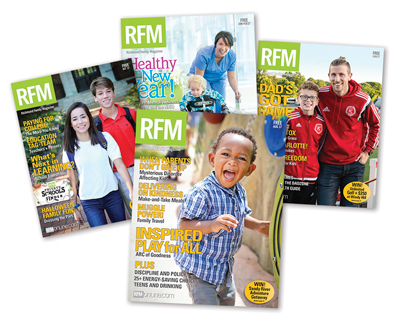Several years back, I caught The Story of Stuff online and vowed to make some changes. Have you seen it? It’s a twenty-minute film that basically reams out the “materials economy” of which we’re all a living, breathing, hyper-consuming part.
Tracking consumer goods through the linear system of extraction, production, distribution, consumption, and finally, disposal, is a very genuine writer and narrator named Annie Leonard. Annie tells us that a full “99 percent of the stuff we harvest, mine, process, and transport is trashed within six months.”
I found Annie’s words both inspiring and depressing, especially considering that when I heard them I had just thrown out our fourth and final Lite Bright product. For the record, the cube version went first (with those awful little drawers no one could open anyway), followed by three of the flat-screen models – one in each of my daughter’s favorite colors. I also realized then that no matter how much of what I was hearing was accurate, even if my home was full of plastics and products with dangerous pthalates, triclosans, and neurotoxins, as The Story of Stuff claimed, that this wasn’t going to change anytime soon.
 So yes, we’re a nation of consumers. According to this short film, on average we consume twice as much stuff today as we did fifty years ago, when stewardship and thrift were valued over shopping and consuming. Nowadays, those of us who are fortunate enough to have incomes (and some of us who don’t apparently) just shop and shop and shop. Then we watch TV, and we’re told to – guess what? Shop some more. It’s sad, but shopping and watching television are reportedly today’s top leisure activities. It’s a never-ending cycle: Work, watch, spend. Work, watch, spend.
So yes, we’re a nation of consumers. According to this short film, on average we consume twice as much stuff today as we did fifty years ago, when stewardship and thrift were valued over shopping and consuming. Nowadays, those of us who are fortunate enough to have incomes (and some of us who don’t apparently) just shop and shop and shop. Then we watch TV, and we’re told to – guess what? Shop some more. It’s sad, but shopping and watching television are reportedly today’s top leisure activities. It’s a never-ending cycle: Work, watch, spend. Work, watch, spend.
Work, watch…
I mentioned some changes earlier.
About the same time I stumbled on The Story of Stuff, the economy, and housing and job markets had just begun their much-ballyhooed descent. Like lots of families, our finances and the way we moved through the world in general, were greatly affected. But hey, there’s nothing like a lousy economy to rescue a family not only from overspending, but also from amassing too much stuff. For starters, I declared a moratorium on clothes shopping. Frankly, we took a good look at our overflowing drawers and crowded closets, at wants versus needs, and at the price tags out there. (Think UGGs times three!)
But it was fall – the season of traditions, of cornflower blue skies, and painted leaves. And for us, just the beginning of the season of spending: starting with our wedding anniversary in mid-September; followed by the retail runner-up, Halloween; a family birthday a month through January; the pinnacle of shopping, Christmas, of course; and concluding with the holiday of love, Valentine’s Day.
So next, we asked the kids to pare down the gift request lists for upcoming holidays. Frankly, it seems like they’ve appreciated receiving fewer gifts with more thought and energy behind them. Is it authentic or just good acting? Does it matter?
As for the fulfillment department, that would be Mom and Dad, we have tried to make it our mission to replace stuff with experiences that will live on in our children’s memories forever, like a Harry Potter midnight premier party, a Howl-o- Scream adventure with friends, and surprise birthday tickets to a Virginia Rep show.
It’s serendipitous that right in the middle of this protracted season of shopping and spending, of gimmes and gotta-haves, along comes Thanksgiving. Along comes this one day that challenges us to spend time together, to be fully present, and to examine what’s important: our faith, blessings and talents; our perseverance and originality. Just the kind of stuff families are made of.




